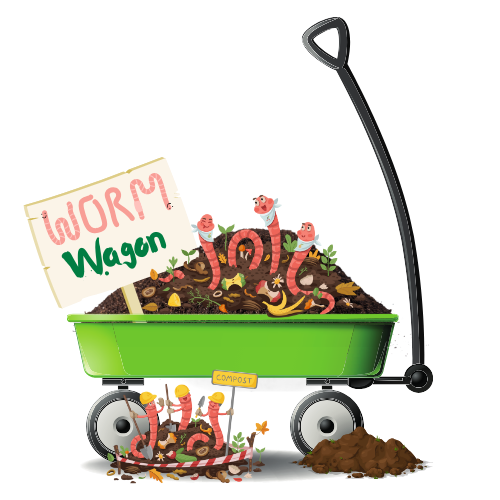Welcome back to The Worm Wagon! Today, we’re reviewing the concept of companion planting. This gardening technique maximizes space AND enhances the health and yield of your plants. If you’re gardening in a small space, companion planting is a game-changer. I’m giving a special focus to zone6a, because that’s where I live.
Let’s review the benefits and best plant pairings for your garden!
What is Companion Planting?
Companion planting involves growing certain plants together to benefit each other. These benefits can include pest control, improved pollination, and better use of space. By understanding which plants thrive together, you can create a more productive and resilient garden.
Benefits of Companion Planting
1. Pest Control: Certain plants can repel pests or attract beneficial insects that help control pest populations.
2. Improved Growth: Some plants release chemicals that enhance the growth of their companions.
3. Better Use of Space: Companion planting allows you to make the most of your available space, especially in small gardens.
4. Enhanced Soil Health: Different plants can contribute to soil health in various ways, such as fixing nitrogen or improving soil structure.
Best Plant Pairings for Zone 6a
Here are some top companion planting pairs that thrive in Zone 6a:
1. Tomatoes and Basil
• Benefits: Basil repels pests like aphids, whiteflies, and hornworms that can harm tomatoes. It also improves the flavor of tomatoes.
• How to Plant: Plant basil around the base of tomato plants, ensuring they receive plenty of sunlight.
2. Carrots and Onions
• Benefits: Onions deter carrot root flies, while carrots can help break up soil for onions.
• How to Plant: Alternate rows of carrots and onions for mutual benefit.
3. Cucumbers and Nasturtiums
• Benefits: Nasturtiums repel cucumber beetles and attract pollinators.
• How to Plant: Plant nasturtiums around the edges of cucumber beds or in containers nearby.
4. Lettuce and Radishes
• Benefits: Radishes grow quickly and can help break up the soil for slower-growing lettuce. They also deter pests that target lettuce.
• How to Plant: Interplant radishes and lettuce, harvesting radishes first to make room for growing lettuce.
5. Beans and Corn
• Benefits: Beans fix nitrogen in the soil, which benefits corn. Corn provides support for climbing bean plants.
• How to Plant: Plant corn in rows with beans sown between them, allowing beans to climb the corn stalks.
6. Spinach and Strawberries
• Benefits: Spinach provides ground cover that helps retain soil moisture and suppress weeds for strawberries.
• How to Plant: Plant spinach around the base of strawberry plants, allowing them to grow together harmoniously.
Tips for Successful Companion Planting
• Research Plant Compatibilities: Not all plants get along. Some combinations can inhibit growth, so research before planting.
• Rotate Crops: Rotate companion plants yearly to prevent soil depletion and reduce pest buildup.
• Observe and Adjust: Monitor your garden to see how plant pairings are performing and make adjustments as needed.
Final Thoughts
Companion planting is a fantastic way to boost your garden’s productivity, especially in small spaces. By choosing the right plant pairs, you can create a thriving, healthy garden that makes the most of your available space. Give it a try in your Zone 6a garden and watch your plants flourish together!
Stay tuned for more gardening tips and inspiration from The Worm Wagon!
Until next time, Happy Gardening!
Lindsay








Leave a comment